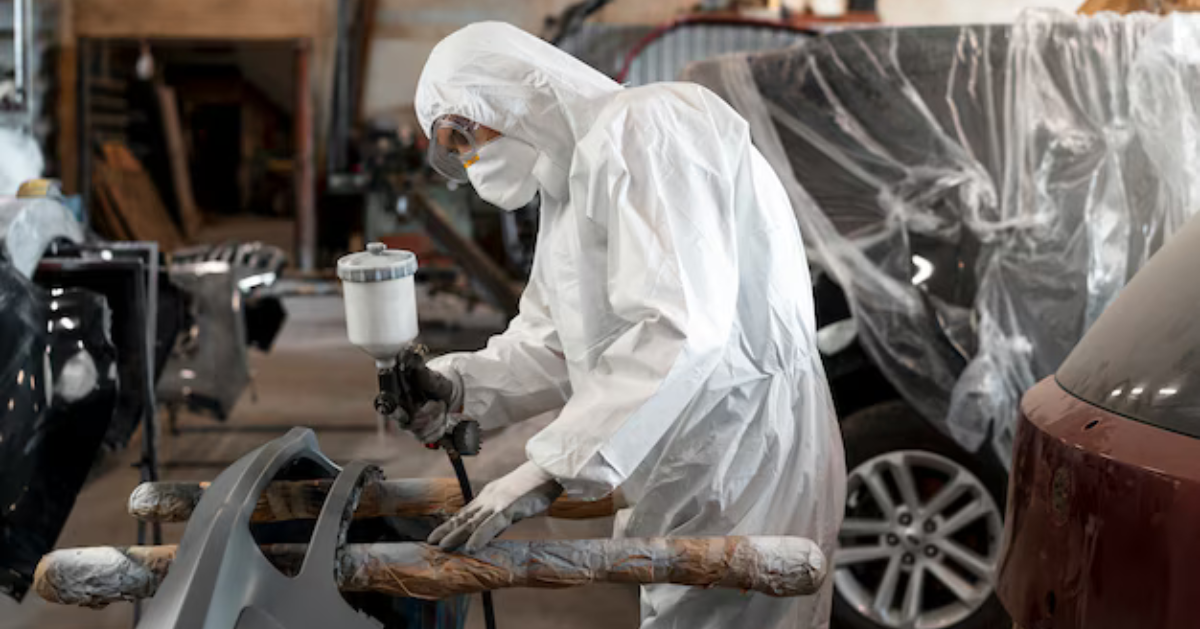Residencies in Jamaica & Beyond
You live and work in your home country of England, but your art practice has taken you all over the world. Tell me a bit about the different residencies that you’ve visited and what series you made there?
My first residency was in Jamaica, a real fluke, straight out of my masters program – I didn’t really know what an artist’s residency was then but of course jumped at the opportunity to work in the Caribbean. I love the chance to travel, work, meet new people, get a taste of what it would be like to really live in a place so different from home rather than passing through as a tourist. It’s real dream job stuff. That first residency was based in documentary photography and ended up as a series called Kingdom Come. Having more churches per square mile than anywhere else in the world, I explored the relationships between culture and religion in Jamaica, particularly the legacy of African roots in search of concealed belief systems and cultural practices. This work investigates the manifestations of the prominent influences of colonialism, an African heritage and how contemporary Jamaica comprises of a fusion of these elements, echoing its social history.
I subsequently spent time in Nepal, Egypt and the UK working on In a Different Light. This project began life as a commission from the County Museum’s natural history collection and I collaborated with four British poets to make work inspired by fairy tales, folk tales, mythology and literature. These visual narratives work to distinguish communities through their allegiance to different belief systems and ancestors, but also unite humanity through the common motifs that recur across diverse cultures’ oral (and, latterly, written) traditions. I have worked with Hindu myths and African proverbs, Nepalese tales and the Old Testament. My influences demonstrate the universality of story-telling, as well as the eclecticism that characterises it. This work began my on going interest in our relationship to the land and its stories and how that defines our cultural identity and imbues us with a sense of belonging.
It was the final stage of this project that took me to a residency at the Colorado Art Ranch and initiated an interest in the significance of that landscape.
The Land of Milk and Honey & Still Talkin ‘Bout A Revolution
I love the immensity of the landscape, its something we don’t have in Europe and the chance to engage with the tradition of the Western landscape as it serves as a symbol of American identity. The West of the imagination implies freedom, individualism, heroism, a myth that transcends both space and time. But most importantly it’s the people of the West that fascinate me, how they shape the land and how it shapes them.Tell me more about the story behind, Still Talking ‘bout a Revolution.
During my second residency in Colorado at the Museum Of Friends I met people who had set up the communes during the ‘Back to the Land’ movement. It is 50 years since Drop City, the first and most infamous of the American communes was conceived. It was the first of many in Southern Colorado and one called Libre still exists today. The breath-taking Huerfano Valley has for generations been a magnet for people in search of a better life. In the late 60s and early 70s, a mixed tribe of young artists, intellectuals and dreamers flocked to this high valley to carve up a new life for themselves. Many of these counter culture experiments failed, as people floundered after the first snowy winters. But not the Commune of Libre, still standing proud today after 45 years, peopled by a dozen of irreducible; the last of the Mohicans, now in their 70s and 80s, holding on to the Hippy Dream long after everyone else has given up.
How is this project connected to your video ‘The Land of Milk and Honey’?
It was a broader portrait of the community who live in the shadows of the Sangre de Cristo Mountains. From the gold rush pioneers to the Spanish farmers to the hippies of the 60’s, people have been coming to Southern Colorado to start a new life, attracted by the unspoiled beauty and isolation of the Huerfano Valley. They are steadfast in their love for the land, still determined to reject the system and cling to the once promised freedom of the Wild West.Do you have more video series in the works?
I’ve made a short film of ‘Still Talking ‘bout a Revolution’ that includes interviews and moving image.
Petrified in Storyland
My process is always evolving and although not dependent on location, I am responding to the interaction with these different communities.Can you tell me more about ‘Petrified in Storyland’? What do the blue spots on the map of Wales represent?
It was made whilst I was an artist in residence at Aberystwyth Arts Centre, University of Wales. This work explores the relationship between the Welsh mythology, cultural identity and the visual residues found the landscape. People took me to places of folk story and these are the sites marked by blue dots on the map. Some of these sites have barely changed in a thousand years but others are modern inventions of the heritage industry. I was interested in the way myth and story are being memorialised and in the cultural significance they have today.I interviewed local people about places that they knew to be of mythological significance and made environmental portraits in their chosen locations. Here I discovered a romanticised quality to their relationships with the landscape alongside reference to contemporary encounters with real land, with all the prosaic encumbrances of ownership, exploitation and politics.How do you approach people to photograph? What are those relationships like?
I met people initially at an artist talk and through people who worked at the centre then it was word of mouth really. I ask people about themselves, their homeland, what stories they associate with the places they live and how they feel about the significance of them.There is a fairytale quality to these photos. For me, it’s particularly palpable in Red Kites feeding at Rhayader, Nant Y Moch (the Stream of Pigs), Peter Stevenson, Llyn Barfog (the bearded lake), & In Memory of Arthur (Battle of Camlan site 1). How do you go about choosing which images are included in a series?
In this series it was important to represent themes that came out of the interviews and other research as well as trying to embody the distinctive Welsh landscape. I was interested in ideas of Romantic Nationalism, if Welsh national identity is defined by ‘legends and landscapes’, by stories of golden ages and enduring traditions and how they are informing contemporary life in a time of discourse on devolution. The edit comes through a slow process of defining and focusing the work with invaluable input of peers and colleagues.
How did Petrified Storylands part one morph into part two?
After the exploration of Welsh storytelling and folkloric locations in part one, I wanted to include images that conjured up a more impressionist and emotional response. This more fictional series is inspired by the leitmotifs discovered such as love, loss and a fascination with a macabre, enchanted world.
Can you tell us one of these folklore stories and which image was it’s re-creation?
I think the Nant y Moch (the stream of Pigs) image embodies key themes from the Welsh stories that still have relevance today. From the Fourth Branch of the Mabinogion comes the story of Gwydion, Master Magician, Storyteller and Trickster of Gwynedd, who learns that Pryderi, King of Dyfed, has a new exotic creature, an otherworldly pig. He enters Pryderi’s Court disguised as a Bard, and with the aid of a little enchantment Gwydion persuades the King to swap his pigs for dogs and horses. He flees the Court before Pryderi realises he has been taken for a fool, and leads the pigs towards Gwynedd, through valleys and along streams, all now marked by the name Moch (pig in English). The King, furious at being tricked, declared war, a war that ended with his death.
In time there were more wars over the building of nuclear power stations for cheap electricity, over the building of wind farms to provide an alternative to nuclear, and over the building of dams to provide water for faraway cities, just like the one built across Gwydion’s stream at Nant y Moch.
Upcoming & Dinosaur Dust
I’m really excited about the upcoming VARC residency it will be the longest one I’ve done so far and the opportunity to be immersed in another very different community of upland hill farming. I’m planning on walking the English/Scottish border and I’m interested in nearby Kielder Forest which is the largest manmade working forest in the UK and there’s also a large military installation that operates up there. But I’m also looking forward to meeting lots of new people and making unpredictable discoveries.What are you working on now?
Most recently I spent a few months in the Mojave Desert as part of the Joshua Tree Highlands Artists Residency (JTHAR). This is an intimate portrait of a peripheral and charismatic community of the high desert, struggling to find meaning and moments of grace in a hostile environment. The work explores the encounters between people and nature, it is a play with light, impermanence and the faculties of seeing, embracing both traditional documentary techniques with more contemporary forms of representation. Working with the contrast of the black of the night and the blinding light of the day, this work investigates the narrative potential of photography in relation to its abstract capacities, bringing forth a reality that is simultaneously uncanny and unknowable. I am interested in landscape, and particularly in combining a desire to experience the ‘sublime’ with the inexplicable seduction of the abyss. This desert community offers many the opportunity to start anew, providing a blank slate of sorts for people attracted to this fragile and contrary environment, to make a life in a merciless clime that is not nearly as empty as it looks. The nature of this human ecosystem is that of a paradox demonstrating an intensity and delicateness, isolation and accessibility, diversity and ambiguity.Calling upon one of photography’s earliest uses—recording the vast, unexplored landscapes of the world—but of course in the American West everywhere has been conquered and exhausted, so people look to the desolate outposts and then to the heavens in search of the authentic wilderness. The images generate a powerful atmosphere and sense of place, one that is infused with the longing, uncertainty and expectation associated with darkness and the unseen.









